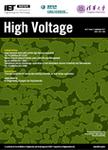Influence of imidazolium ionic liquids as organic filler dispersant on electrical properties of chitin/epoxy composites
作者机构:Hangzhou City Univ Sch Informat & Elect Engn Hangzhou 310015 Peoples R China Zhejiang Univ Coll Elect Engn Hangzhou Peoples R China State Grid Tianjin Power Chengnan Dist Supply Co Tianjin Peoples R China Natl Inst Technol Elect Engn Dept Silchar Assam India
出 版 物:《HIGH VOLTAGE》
年 卷 期:2024年第9卷第4期
页 面:930-938页
核心收录:
基 金:Natural Science Foundation of Zhejiang Province [LZ22E070001] Key Project of Natural Science Foundation of Zhejiang Province [2023M733031] China Postdoctoral Science Fundation
摘 要:Ionic liquid (IL) as the dispersant can help disperse the organic nanofillers to improve the performance of epoxy resin remarkably. However, the effect of IL on the electrical properties of epoxy composites is not well documented. This comprehensive study consists of the preparation, material characterisation and systematical investigation of electrical properties of 1-Butyl-3-methylimidazole hexafluorophosphate-modified chitin fibre/epoxy composites. The findings show that introducing IL into a chitin/epoxy composite can minimise porosity defects and improve the compatibility between filler and matrix. However, a high concentration of IL induces severe charge injection into chitin/epoxy composites and internal electric field distortion. The addition of 0.75%-1.5% mass fraction IL results in maximum enhancement in the AC breakdown strength of the chitin/epoxy composite (by similar to 71%) compared with the non-IL composites. The non-linear conductivity and non-uniform charge injection phenomena of IL-modified composites can be attributed to the movement of radicals and anions due to the decomposition of IL. Through this study, it is highly expected that the organic filler dispersion in the epoxy matrix can be optimised by tuning IL to improve the insulation properties.



